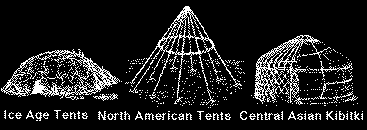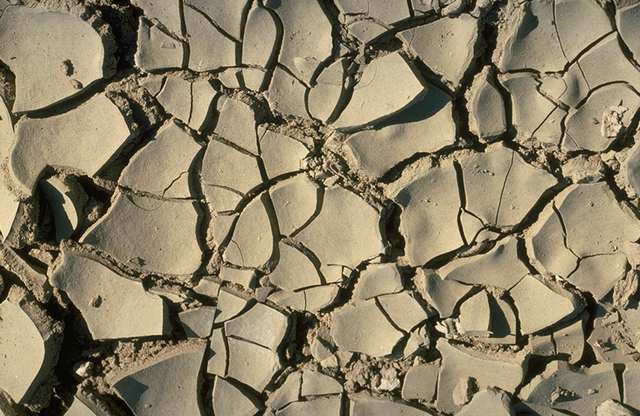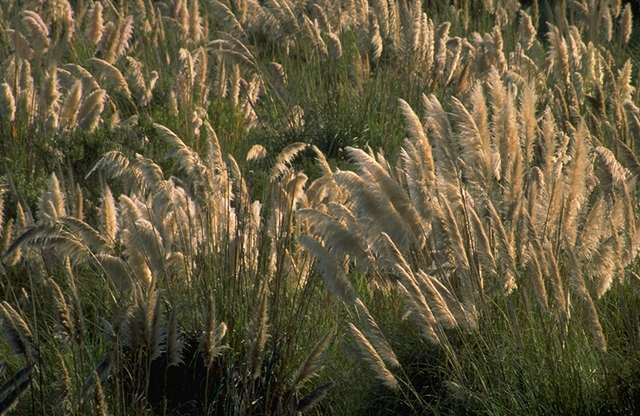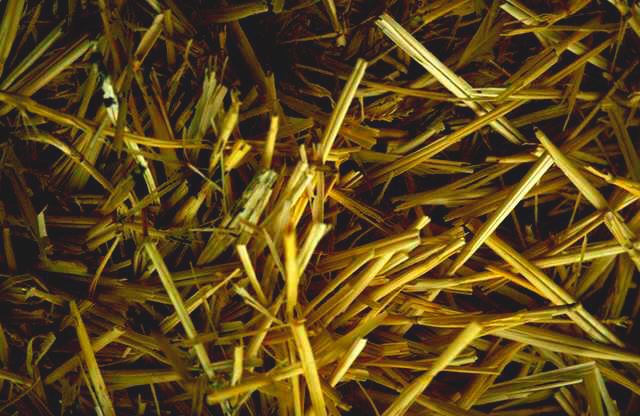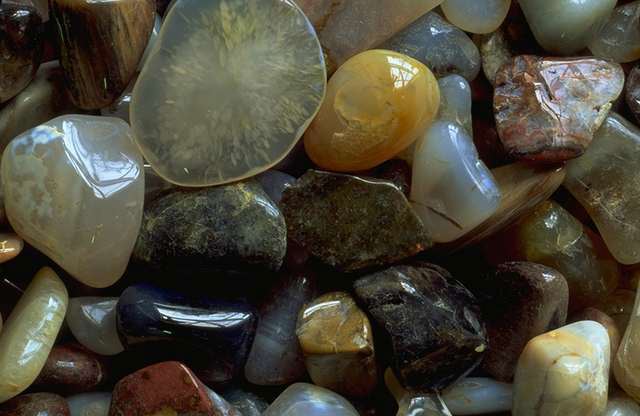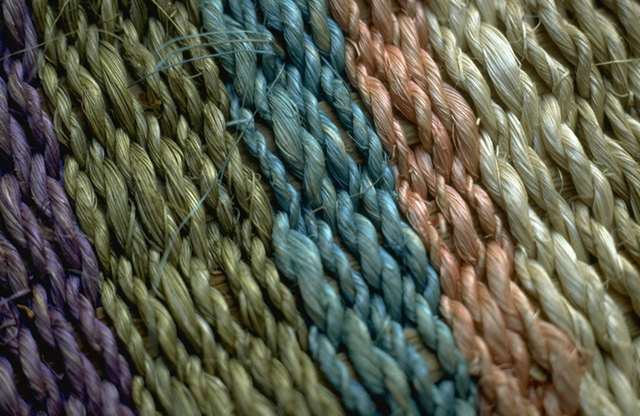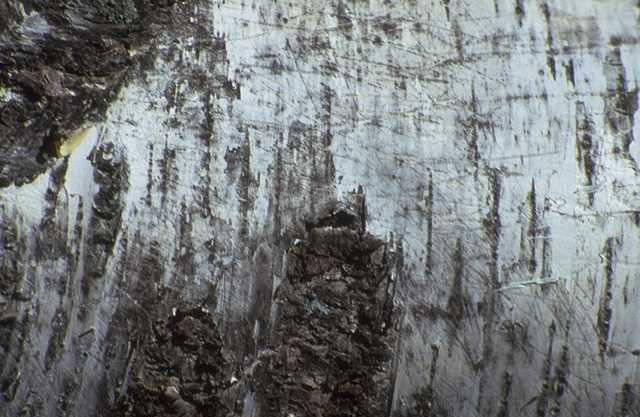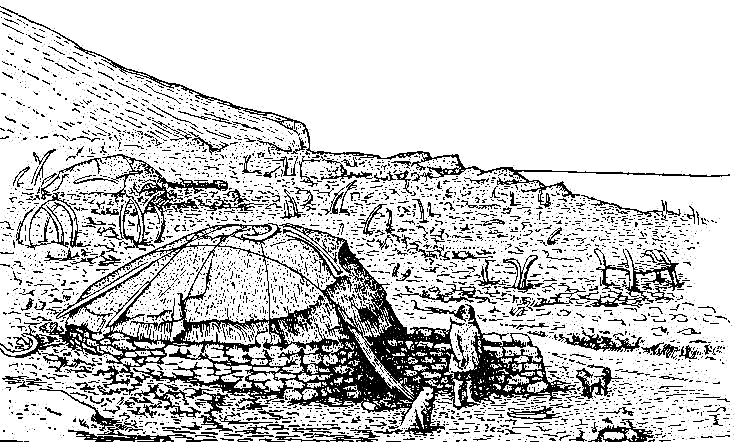 The peoples of Northern Canada and Alaska and the Indians of the Great
Plains of the United States possess two types of tents, an older ridge
tent belonging to the Inuit and conical tents found among Indians and some
Inuit. The Inuit have developed specialized house types for winter,
spring and autumn and summer conditions, so great is the contrast between
the seasons.
The peoples of Northern Canada and Alaska and the Indians of the Great
Plains of the United States possess two types of tents, an older ridge
tent belonging to the Inuit and conical tents found among Indians and some
Inuit. The Inuit have developed specialized house types for winter,
spring and autumn and summer conditions, so great is the contrast between
the seasons.
- Inuit village at East Cape, Siberia.
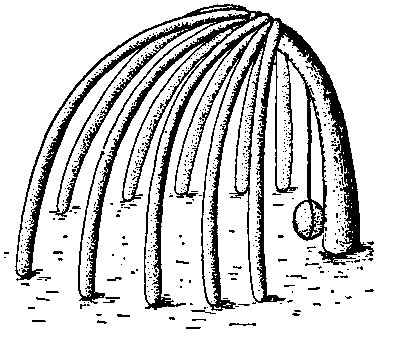 The arched whale ribs of the winter houses at East Cape, Siberia spring
from the outer wall and converge at a common point over one side of the
entrance, where they are propped up by the jawbone of a whale. The outside
of these summer houses was covered with walrus skins held in place by
stone weights, driftwood and bone.
The arched whale ribs of the winter houses at East Cape, Siberia spring
from the outer wall and converge at a common point over one side of the
entrance, where they are propped up by the jawbone of a whale. The outside
of these summer houses was covered with walrus skins held in place by
stone weights, driftwood and bone.
- House frame of whale ribs and jawbone.
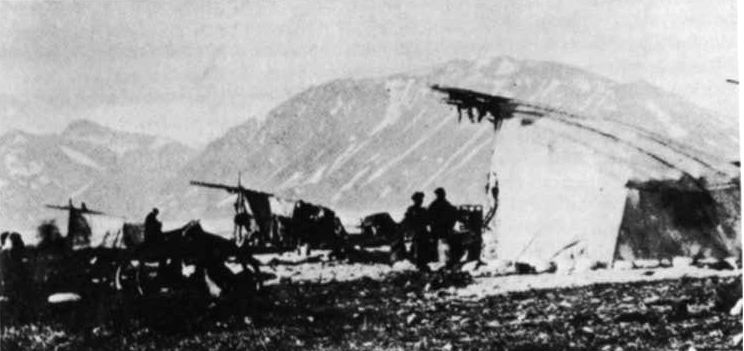 The forms of Inuit tents are clearly related to comparable types in
Eurasia and in other parts of America. The sequence of Inuit tent
development is connected with the timing of Inuit migrations across the
northlands. Moving eastward from Alaska the domical, western conical,
eastern conical, and ridge tents are encountered in that order.
The forms of Inuit tents are clearly related to comparable types in
Eurasia and in other parts of America. The sequence of Inuit tent
development is connected with the timing of Inuit migrations across the
northlands. Moving eastward from Alaska the domical, western conical,
eastern conical, and ridge tents are encountered in that order.
- Central Inuit summer tent.
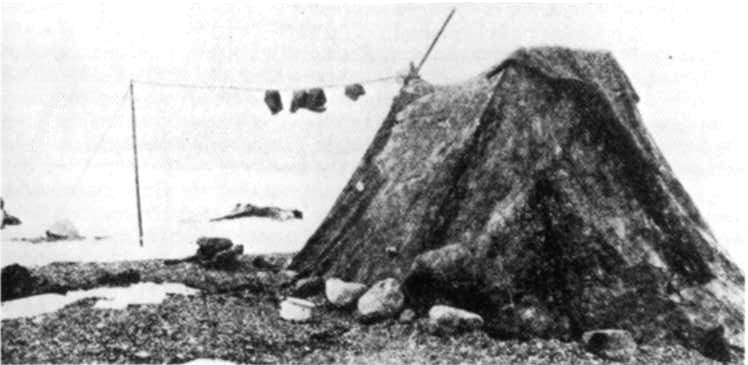 The Inuit talent for eliminating non-essentials where materials, notably
wood are scarce, is well illustrated by the progressive structural
simplification of the ridge tent. The summer sealskin tent of the Iglulik
is typical of the abbreviated ridge type; it has no ridge pole, end poles
or side poles.
The Inuit talent for eliminating non-essentials where materials, notably
wood are scarce, is well illustrated by the progressive structural
simplification of the ridge tent. The summer sealskin tent of the Iglulik
is typical of the abbreviated ridge type; it has no ridge pole, end poles
or side poles.
- Iglulik sealskin tent, Ipiutaq.
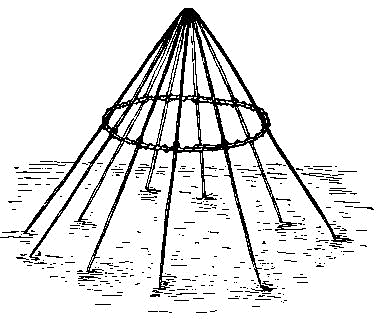 The eastern conical tent was probably borrowed from the Cree Indians who
transmitted it to the Caribou Inuit, and they in turn passed it on
northwards to the tribes of the Northwest Passage, where a shortage of
wood restricted its use. The smoke hole was discontinued because the Inuit
employed a relatively smokeless type of heating and this combined with the
natural conditions resulted in its omission from the Inuit conical tent.
The eastern conical tent was probably borrowed from the Cree Indians who
transmitted it to the Caribou Inuit, and they in turn passed it on
northwards to the tribes of the Northwest Passage, where a shortage of
wood restricted its use. The smoke hole was discontinued because the Inuit
employed a relatively smokeless type of heating and this combined with the
natural conditions resulted in its omission from the Inuit conical tent.
- Frame of a conical summer tent, Hotham Inlet.
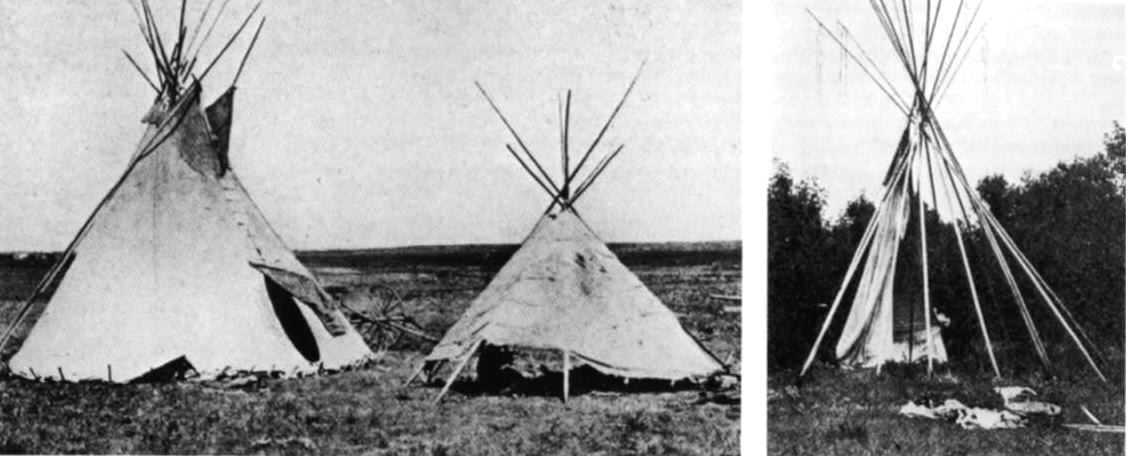 The conical tent developed around the requirements of efficient combustion
in a cold windy climate. The tent serves as a combustion chamber, chimney,
and wind break for the central fire in addition to functioning as a
dwelling.
The conical tent developed around the requirements of efficient combustion
in a cold windy climate. The tent serves as a combustion chamber, chimney,
and wind break for the central fire in addition to functioning as a
dwelling.
- Blackfoot teepee and shelter.
- Crow teepee framework with canvas pole in place. The poles cross and form two apices, one above the other.
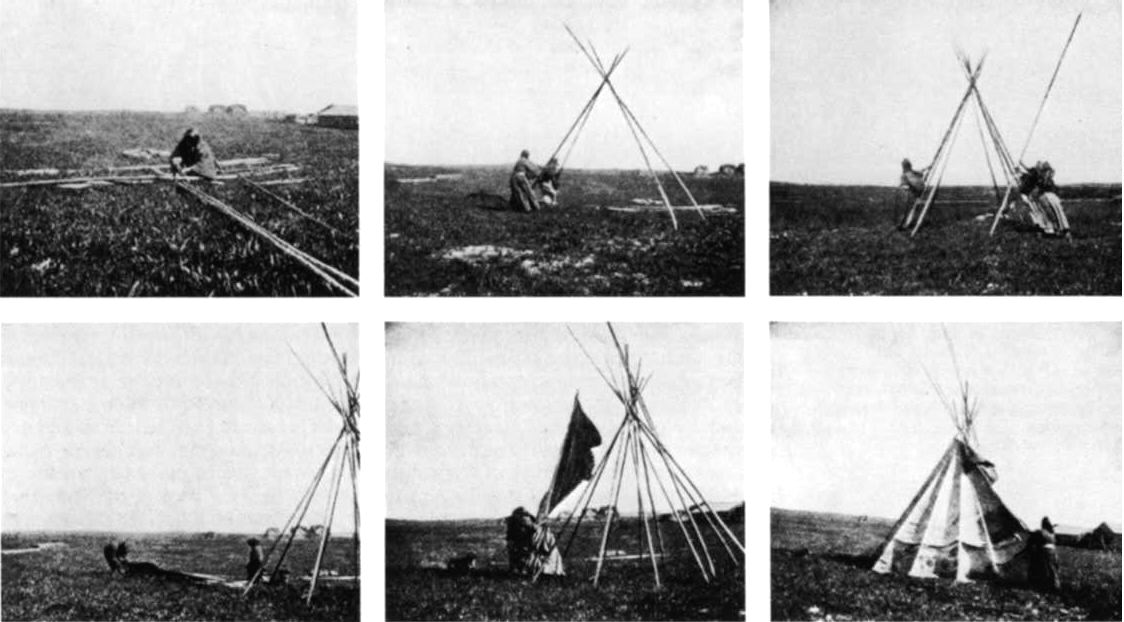 Some tribes lived in the teepee throughout the year; others, notably the
village Indians, used it only occasionally when on the hunt. Most of the
groups who utilized the teepee as a secondary dwelling were
agriculturalists and their use of the teepee coincided with periodic
migrations out across the open country to hunt buffalo.
Some tribes lived in the teepee throughout the year; others, notably the
village Indians, used it only occasionally when on the hunt. Most of the
groups who utilized the teepee as a secondary dwelling were
agriculturalists and their use of the teepee coincided with periodic
migrations out across the open country to hunt buffalo.
- Setting up a Blackfoot teepee.
